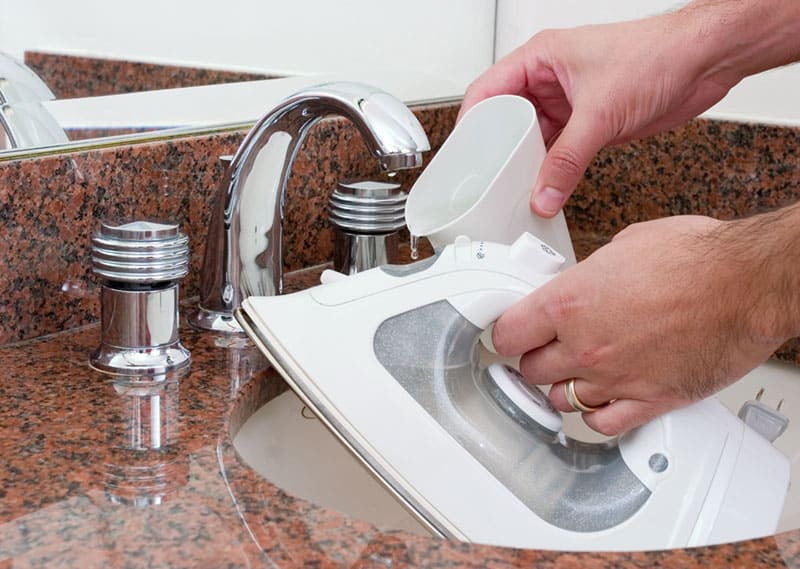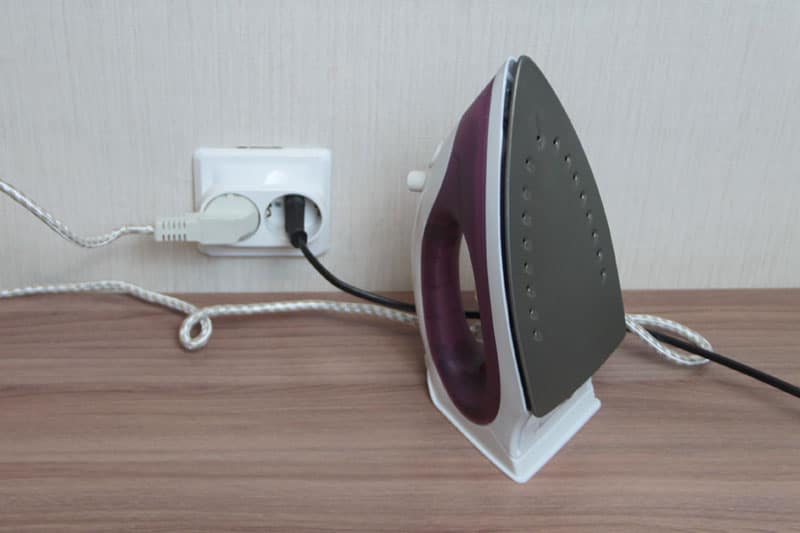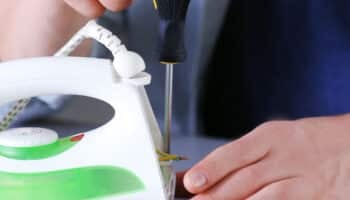You plug your iron in, and immediately, your circuit breaker trips. And what’s worse is that this is the third time it has tripped today!
What gives?
There are many possible reasons why your iron keeps tripping your breaker:
| Cause | Fix |
|---|---|
| Failed heating element | Replace the element |
| Internal water leak | Replace the iron |
| Overloaded circuit | Unplug some items from the circuit |
| Old iron | Replace the iron |
| Extension cord overload | Limit the number of extension cords you use in the home |
In some instances, it’s possible to fix an iron that keeps tripping your breaker. But in others, the only solution is to replace your iron. To find out where you stand with yours, take a look at the 5 reasons why your iron trips and how you can fix the issue below.
Read on to get your iron back to normal!
5 Reasons Your Iron Trips and How to Fix It
Many factors can be at play when your iron keeps tripping the electric circuit breakers in your home. It’s critical to look at your appliance’s internal components and the situation from all angles. Here are some of the things I like to check first.
#1 A Faulty Heating Element
A faulty heating element in your iron is the first possible reason why your iron keeps tripping your breaker. The heating element is responsible for making your iron hot enough to remove the wrinkles from your clothes.
Over time, your heating element can start to malfunction and become unresponsive. The thermal safety mechanism that powers the element can trip your circuit breaker as a safety measure.
Sometimes, you might even hear beeping coming from the iron.
In my experience, the only solution here is to *replace the element or to replace the iron altogether. Depending on the make and model of the iron.
To replace the heating element in your iron, you’ll need:
- A screwdriver.
- A replacement power cord (optional).
- A wrench.
- A replacement heating element (thermostat).
Here are the steps to follow:
- Disconnect the iron from the power outlet and allow it to cool before you attempt to touch it.
- Remove the cover panel using a screwdriver.
- Inspect the power cord under the cover panel. If worn, replace it.
- Remove the nuts and screws that hold the heating element to the iron plate. You’ll need a wrench and a screwdriver to remove the screws.
- Remove the old heating element and replace it with a new one.
- Fix the new heating element to the iron plate using the nuts and screws.
- Return the cover panel to its place using a screwdriver.
- Plug the iron in and test it out.
*NOTE: You should discontinue using the iron until you know what the problem is and have fixed it.
#2 An Internal Water Leak
If your iron is still tipping your breakers, you should stop using the iron immediately, as the problem could be coming from an internal leak. It’s not uncommon for steam irons to develop an internal water leak from the tank, causing the iron to trip your circuit breaker.
Repairing a leaking tank is a fiddly job, and finding the parts to do so is not straightforward. I find that replacing the iron is the simplest course of action in such a situation.
If your iron has an internal leak, you’ve likely had it for a while now. But if the iron is relatively new, you should contact the manufacturer, as you may still be under warranty coverage.

#3 An Overloaded Circuit
Overloading a circuit is easier than you think – especially if you live in an older home. Since irons are major power hogs (with many models using upwards of 1000 Watts per hour), having them connected to a shared circuit with other appliances is a bad idea.
Many areas in a home share one circuit for several outlets, so be careful where you plug in your iron. Here are a couple of suggestions to prevent your iron from tripping your circuit breaker:
- Try ironing in another room that has multiple circuits for each outlet.
- Unplug some of the electrical appliances in the room you’re in. Then use the iron.

#4 An Old Iron
If your iron keeps tripping your electrical breakers, chances are it’s getting a bit old. From what I’ve seen, over the years, older electrical appliances are more likely to trip circuit breakers for a couple of reasons.
- Older appliances use more electricity.
- Older appliances are more likely to overheat and trip a circuit breaker.
The most cost-effective solution is to replace the iron. Finding replacement parts for an old iron is almost impossible as manufacturers stop making them. And even if you find the parts, chances are they won’t last long.
#5 An Extension Cord Overload
There’s nothing wrong with using your iron with an extension cord at home. However, you do need to be mindful of how many extension cords you use around the house.
The more extension cords you use around the home, the higher your electricity use. Your electronics can only take so much. So, plugging your iron into an extension could be the straw that breaks the camel’s back, causing the breakers to trip.
Here are some tips to keep in mind:
- Limit the number of extension cords you use around the house.
- When plugging your iron in, do not overload the circuit.
- If other high-consumption electrical items are in the socket, unplug some of them before ironing your clothes.
Fixing an Iron That Keeps Tripping Your Breaker
You turn your iron on, and within an instant, the circuit breaker trips, and the iron turns off. You’re left in the dark and no closer to finishing your ironing in time for a relaxing afternoon.
In this article, you’ve seen 5 reasons irons trip electrical circuit breakers. You’ve also seen what you should do about you’re in such a situation. I hope the information here has helped you solve your iron’s problem.
If this resource was helpful, please check out some of our other articles and free guides below. You could even sign up for our email list.
Have a great day!
-Craig.







